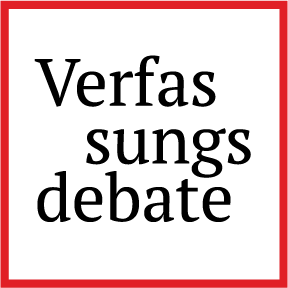The Human Right to a Healthy Environment from an EU Charter Perspective
There has been a veritable “turn to rights” in environmental and climate litigation, especially in the last five years. The EU has in the same period taken an “increasingly prominent role” in relation to climate change and adopted “a considerable amount of new climate legislation” (as observed by The Hague Court of Appeal in Shell/Milieudefensie). Think of the European Climate Law, the Corporate Sustainability Reporting Directive (CSRD), the Corporate Sustainability Due Diligence Directive (CSDDD) and the EU Emissions Trading System 2 (ETS 2).
This warrants the question of whether there has been a similar turn to human rights before the Court of Justice of the EU (hereafter: CJEU). I answered this question in a publication with Sanderink on the basis of an analysis of the CJEU case law until December 2022. This blog post serves as a timely opportunity to reflect on these findings. It will be argued that there is still no turn to rights in Luxembourg, except for the noteworthy Grand Chamber judgment in Ilva. This is perhaps surprising considering the existence of a self-standing “principle” in the EU Charter on environmental protection: Article 37. After an overview of relevant developments before the CJEU, this post will offer some explanations for the absence of a rights turn and critically reflect on the strict locus standi requirements before the CJEU.
Article 37 CFR as a self-standing “principle”
The relatively recent EU bill of rights is noteworthy for its inclusion of a self-standing provision on environmental protection. Article 37 of the Charter stipulates: “A high level of environmental protection and the improvement of the quality of the environment must be integrated into the policies of the Union and ensured in accordance with the principle of sustainable development.” Other regional and international human rights treaties lack a self-standing provision, as also noted by contributions in this blog symposium from Spijkers about the international (human rights) system and Kobylarz about the European Convention on Human Rights (ECHR). Note, however, that various national constitutions as well as some regional treaties such as the Aarhus Convention (Article 1) and the African Charter (Article 22) contain an explicit right to a healthy environment (R2HE).
The obvious limitation of Article 37 of the Charter is that it is formulated as a “principle” instead of a “right” in the sense of Article 52(5) of the Charter. This means that principles “shall be judicially cognisable only in the interpretation of such acts and in the ruling on their legality” (for a more extensive discussion, see here). In addition, the formulation of Article 37 does not differ considerably from Article 11 TFEU and Article 191(2) TFEU, laid down in the Parts of the Treaty with EU principles and Union actions, respectively.
No rights turn: shield rights are dominant
Article 37 and other Charter rights have only played a limited role in the environmental and climate case law of the CJEU so far. This especially holds true for the substantive “sword” rights such as Article 2 (right to life) and Article 7 (respect for private life and the home) that are generally used to advance environmental protection. Even Article 37 has played a relatively limited role (for an overview, see Table 1). There has, however, been a subtle move from a short passing reference to more extensive engagement whereby Article 37 is used as an interpretative tool or to highlight the importance of environmental protection as a justification for an interference. Practice in relation to the latter has varied with some judgments citing Article 37, while others merely mentioning environmental interest without reference to this provision. Advocates General (AGs) have generally engaged more extensively with Article 37 (see here and here).
What’s more, the number of cases in which Charter provisions have been used to counter measures protecting the environment is higher (e.g. Križan or Symphony Environmental Technologies). This especially holds true for anti-environmental “shield” rights such as Article 17 (right to property) and Article 16 (freedom to conduct a business). Also, Articles 20 (equality), 21 (non-discrimination) and 41 (good administration) have, by and large, been used in an “anti-environmental” way. The CJEU has also recently precluded a rights turn by declaring the “People’s Climate Case” Carvalho inadmissible due to lack of standing (more later in this post). It also closed off the possibility of state liability in JP in relation to breaches of air quality directives by denying that these directives intend to confer rights upon individuals (see especially para. 56).
A slight turn more recently in Ilva?
The Grand Chamber of the CJEU rendered a judgment in Ilva in June 2024 concerning the pollution caused by the European largest iron and steelworks located in Southern Italy and the damage to human health. Italy was earlier given a rap over the knuckles in infringement proceedings in 2011, and the European Court of Human Rights determined a violation of Article 8 ECHR in Cordella because of the polluting effects on the environment and human health. The Strasbourg and Luxembourg system thus complement each other nicely, as also noted by Callewaert and Bellezit. The CJEU also cross-checked its analysis with the ECtHR and explicitly cited the Strasbourg precedent in Ilva. Above all, especially noteworthy for the purpose of this contribution is the combined role of Article 37 and Article 35 (right to health care) in the interpretation of relevant secondary EU law. The CJEU interprets Directive 2010/75 in the light of both provisions after having determined the following:
“Having regard to the close link between the protection of the environment and that of human health, Directive 2010/75 seeks to promote not only the application of Article 37 of the Charter, as stated in recital 45 of that directive, but also the application of Article 35 of the Charter, it not being possible to achieve a high level of protection of human health without a high level of environmental protection, in accordance with the principle of sustainable development.”
It remains to be seen whether Ilva marks a turn to a more extensive role for pro-environmental sword rights in the CJEU’s case law.
Explaining the absence of a turn: silent rights and locus standi
One obvious explanation for the limited role of rights in the environmental/climate case law of the CJEU is the abundance of so-called silent rights in EU secondary law (see also Bogojević and Hilson). Reliance on the Charter is often unnecessary because of clear, precise and unconditional statutory obligations and specific limit values, such as in the (precursors of the) Directive on ambient air quality and cleaner air for Europe (AAQD) or the Water Framework Directive.
Another explanation are the strict locus standi requirements. The best illustration is the earlier mentioned Carvalho case. The applicants argued that the EU was insufficiently reducing greenhouse gas emissions in violation of a wide variety of Charter rights (Articles 2, 3, 15, 16, 17, 20, 21 and 24). The CJEU relied on its well-established Plaumann case law in relation to the individual concern requirement. The (alleged) victims had failed to show that “the contested act affects them by reason of certain attributes which are peculiar to them or by reason of circumstances in which they are differentiated from all other persons, and by virtue of these factors distinguishes them individually just as in the case of the person addressed.” The CJEU added that the fact that the contested acts infringe fundamental rights is in itself sufficient to establish such individual concern (para. 78). Therefore, it did not accept the argument that the effects of climate change are unique to and different for each individual. The CJEU also rejected the ground of appeal, arguing in favour of easier access for (members of) associations to bring climate cases before the CJEU (paras. 89-92). The CJEU’s strict locus standi requirements have been the subject of criticism and concerns from the ECtHR (Posti and Rahko v Finland, para. 53), ECtHR judges, AG Jacobs, the General Court, the Aarhus Compliance Committee and several commentators (e.g. Craig).
Noteworthy is that the ECtHR referred to the CJEU’s strict locus standi case law (including Carvalho) in Verein KlimaSeniorinnen Schweiz and Others in which it broadened access for associations in climate cases. Strasbourg Judge Eicke, for example, noted in his partly concurring and partly dissenting opinion in KlimaSeniorinnen that “individuals and associations only have very limited standing before the [CJEU] under Article 263 TFEU” (para. 51(b)). It remains to be seen whether the ECtHR will find the locus standi to be in conformity with Article 6 ECHR, after EU accession to the ECHR (for a discussion of the consequences, see here).
The way forward
In my article with Sanderink, we argued that a more prominent rights turn is warranted before the CJEU as well, also from a legal perspective. We distinguished two potential avenues. First, the CJEU can – just like the ECtHR – derive positive obligations from relevant Charter provisions, including Articles 2 (right to life) and 7 (right to respect for private life and the home) of the Charter. Second, the CJEU can rely more extensively on Article 37 as a tool for interpreting primary and secondary EU law in an environmentally friendly way.1) The possibilities to do so have grown in recent years. All EU secondary laws mentioned in the introduction contain references to the Charter, except for ETS 2. Most noteworthy is the explicit reference to Article 37 in the European Climate Law (recital 6).
By way of conclusion, recognition of a separate R2HE should not be seen as a panacea. Much depends on the actual formulation as well as the institutional and procedural context of the respective system. The recent Grand Chamber judgment in Ilva, nevertheless, could herald a new era in which human rights play a more considerable and explicit role in relation to the protection of the environment and climate. This development is equally relevant to cases where intellectual property protection clashes with or ignores environmental interests.
References
| ↑1 | This also holds true for national courts in their handling of cases in which EU law plays a role. In a short article (in Dutch), I argued with my colleague De Waele that the Dutch Supreme Court should attach more importance to the Charter, including Article 37, as well as relevant ECtHR case law (following Article 52(3) of the Charter) in its interpretation of Regulation 598/2014 on the establishment of rules and procedures with regard to the introduction of noise-related operating restrictions at Union airports within a Balanced Approach. The eventual Supreme Court judgment about the reduction of the number of flight movements per year at airport Schiphol does, however, not engage with the Charter. |
|---|
This symposium is possible due to the support of the Institute for Information Law (IViR) at the University of Amsterdam (UvA).




